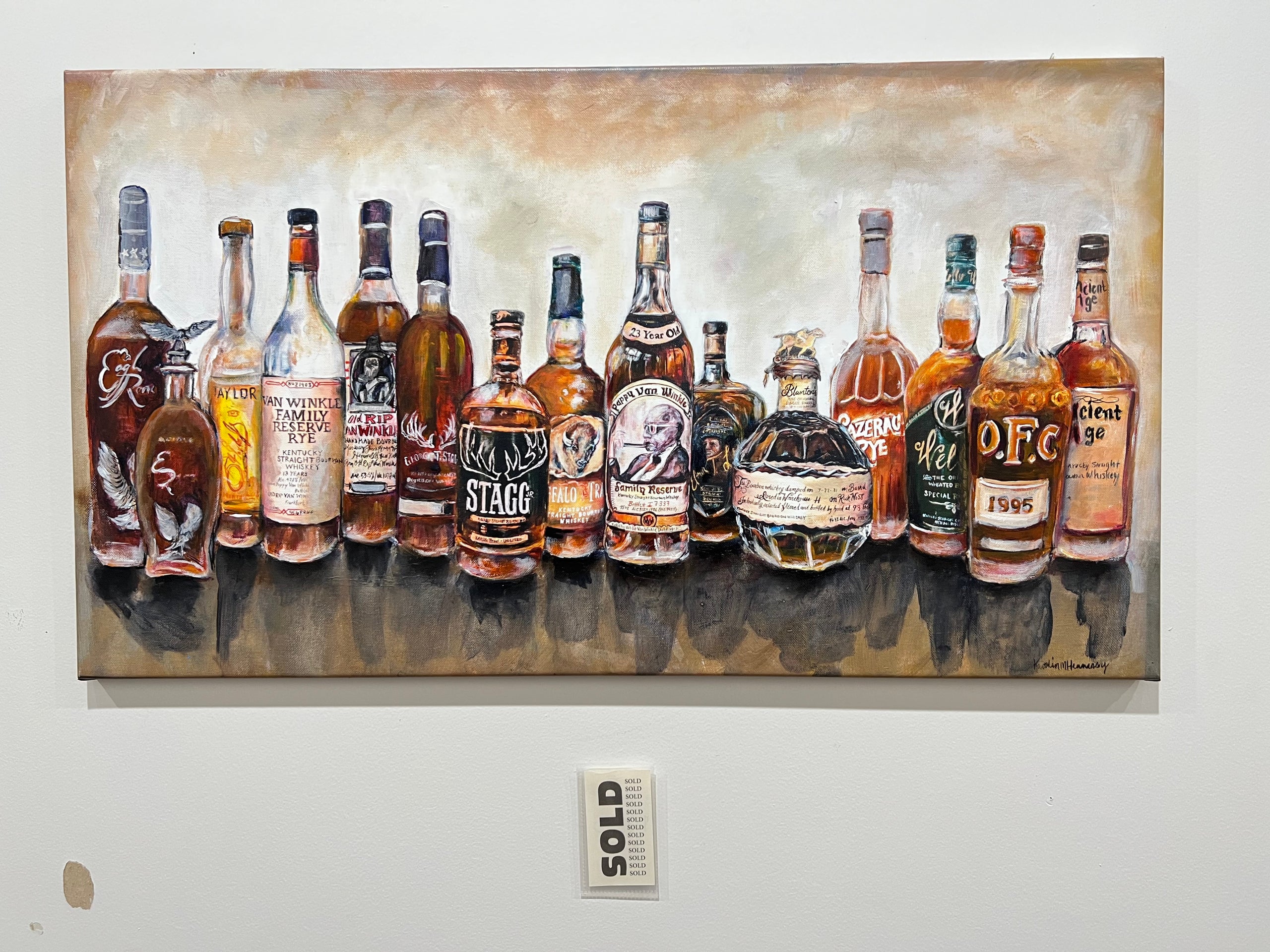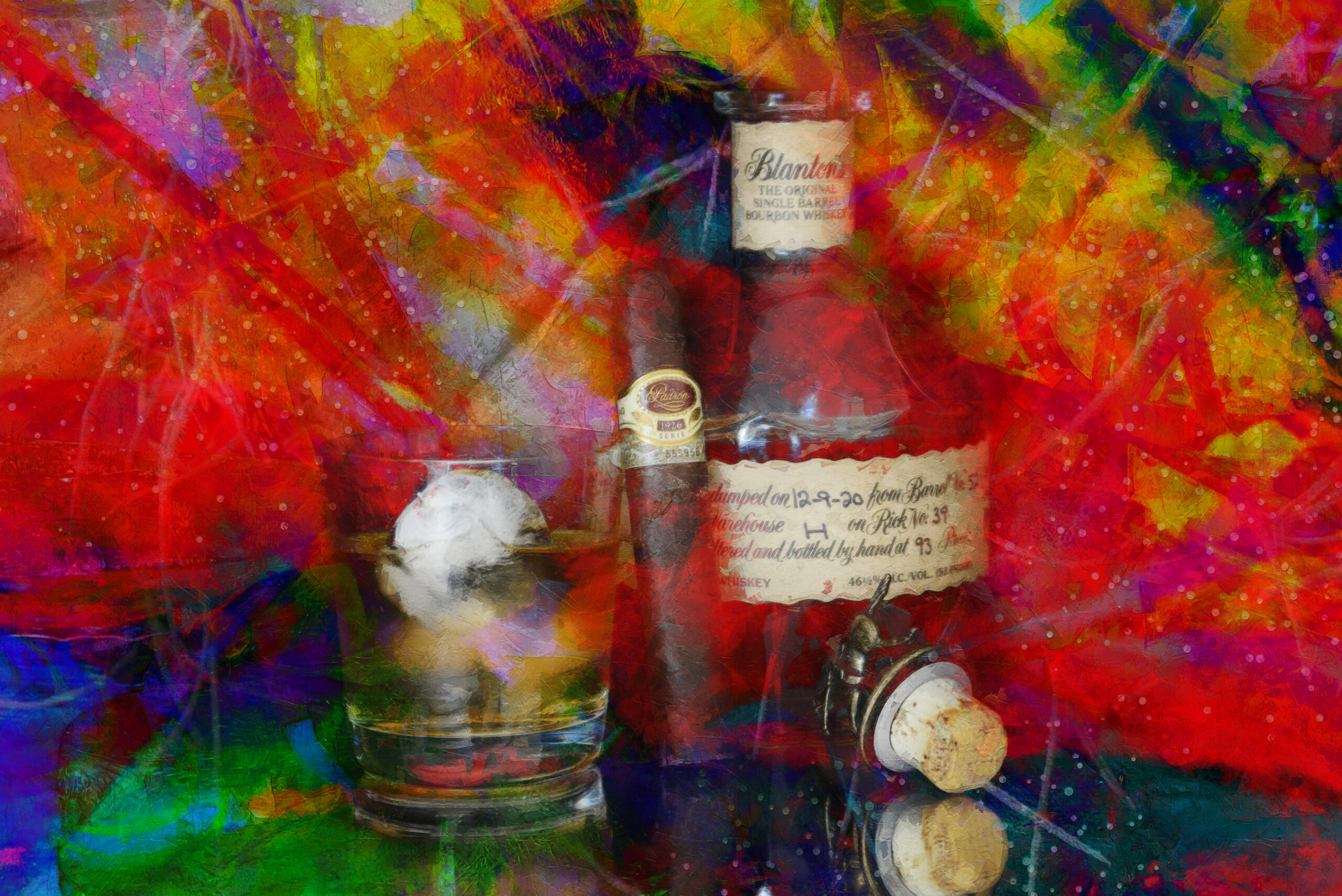Bourbon Art in Contemporary Culture: Where Tradition Meets Development
Bourbon Art in Contemporary Culture: Where Tradition Meets Development
Blog Article
The Relevance of Whiskey Art in Celebrating Heritage and Workmanship in the Beverage Industry
The elaborate connection between whiskey art and the party of heritage and workmanship within the drink market can not be overstated. With thoughtfully designed containers and labels, whiskey brands envelop their historic roots and the artisanal skills that specify their manufacturing techniques. This creative dimension not just boosts market charm however also functions as an avenue for cultural storytelling, cultivating a deeper connection between the consumer and the craft. As we explore the different facets of this topic, interesting questions concerning the effect of modern fads on standard methods arise, motivating additional examination.
The Historic Roots of Whiskey
At the heart of whiskey's appeal exists a rich tapestry of historic roots that map back to old people. The beginnings of scotch can be connected to the distillation methods of the Sumerians and Babylonians around 2000 BCE, where very early types of fermented grain drinks began to emerge. Nonetheless, it was in the Center Ages that the art of purification developed significantly, especially in Ireland and Scotland, bring about the development of scotch as we know it today.
The term "scotch" itself acquires from the Gaelic word "uisce beatha," meaning "water of life." This phrase highlights the social significance of whiskey in Celtic societies, where it was usually associated with rituals, events, and common bonding. By the 15th century, purification came to be a recognized craft within monastic neighborhoods, leading the way for the facility of lawful distilleries.
As profession courses expanded, whiskey's popularity grew, transcending regional limits and catching the rate of interest of lovers worldwide. Realism Art. This historic trip mirrors not just the workmanship behind bourbon manufacturing but likewise its important function in social and social contexts, marking it as a considerable beverage throughout history
Artistic Expression in Branding
Whiskey branding stands as a compelling intersection of artistry and commerce, where aesthetic identification plays a critical duty fit customer understanding. The appearances of bourbon tags, product packaging, and advertising materials reflect not just the brand name's tale however also its core worths and heritage. Via creative expression, distilleries communicate a narrative that reverberates with customers, evoking emotions and triggering links.
Using shade, typography, and imagery in branding serves to separate items in a saturated market. For instance, typical concepts may evoke a sense of authenticity and craftsmanship, while modern designs can signify advancement and forward-thinking. This strategic imaginative direction improves brand name recognition and commitment, allowing consumers to build a personal partnership with the whiskey they select.
In addition, artistic expression in branding usually serves as a party of local heritage. Distilleries often integrate neighborhood symbols or historic referrals into their styles, developing a local color that welcomes customers to partake in a wider social experience. Inevitably, the artistry behind scotch branding not just boosts aesthetic appeal but likewise improves the total narrative of the brand, promoting a much deeper recognition for the workmanship and heritage ingrained in each bottle.
Craftsmanship in Bottle Style
The creativity obvious in bourbon branding expands beyond visual identity to encompass the craftsmanship included in bottle style. Each bottle acts as a vessel not just for the spirit within, however likewise for the tale it outlines its practice, beginning, and high quality. The design procedure calls for thorough focus to information, as aspects such as closure, product, and form contribute substantially to the general perception of the whiskey.
Workmanship in container style involves selecting high-quality glass that can boost the bourbon's color and clarity, while also giving a responsive experience for the consumer. The shape of the container should be both functional and aesthetically enticing, commonly showing the heritage of the brand. Several distilleries go with unique forms or embossed logo designs that stimulate a sense of credibility and history.
Moreover, the tag design and typography play a critical function in communicating the brand name's narrative. Realism Art. A well-crafted bottle not just mesmerizes the customer's eye however also enhances the brand's commitment to quality and custom. By doing this, the workmanship of bottle layout becomes an essential aspect of the bourbon experience, merging creativity with a profound respect for heritage
Social Importance of Bourbon Art
Celebrating custom and workmanship, the cultural relevance of whiskey art transcends plain visual appeals, linking with the social and historical stories of the regions from which it stems. Each container works as a canvas, illustrating the unique stories, mythology, and practices that have shaped regional whiskey-making techniques. The elaborate styles usually reflect the heritage of the distillers, integrating icons and concepts that resonate with the culture and values of their neighborhoods.

In enhancement, whiskey art plays a crucial role in common celebrations and celebrations, offering as a tangible web link in between people and their shared experiences. By valuing the virtuosity in whiskey product packaging, customers cultivate a much deeper understanding and regard for the craft, ultimately enhancing their satisfaction of the beverage itself.
Modern Trends in Scotch Discussion
In recent years, the presentation of bourbon has developed to mirror modern tastes and patterns while still recognizing typical craftsmanship - Limited Edition. Distilleries are significantly concentrating on aesthetic aspects that boost the total drinking experience, bridging the space in between heritage and modernity
Cutting-edge container designs have emerged, typically incorporating sustainable products and imaginative tags that inform engaging tales. Many brands now work together with regional artists, instilling their items with special aesthetic expressions that why not try here reverberate with customers. In addition, limited-edition launches are usually packaged in collectible containers, including worth and allure for aficionados.

Conclusion
In verdict, whiskey art offers as an essential avenue for sharing the heritage and workmanship intrinsic in the beverage industry. Through complex branding, innovative container designs, and culturally substantial artistic components, scotch brand names efficiently recognize their traditions and attach with consumers.


Craftsmanship in bottle style entails choosing top notch glass that can improve the whiskey's shade and clearness, while additionally offering a tactile experience for the customer. In this way, the workmanship of container style ends up being an important element of the whiskey experience, combining artistry with an extensive respect for heritage.
In conclusion, bourbon art serves as an important conduit for sharing the heritage and workmanship intrinsic in the beverage industry.
Report this page